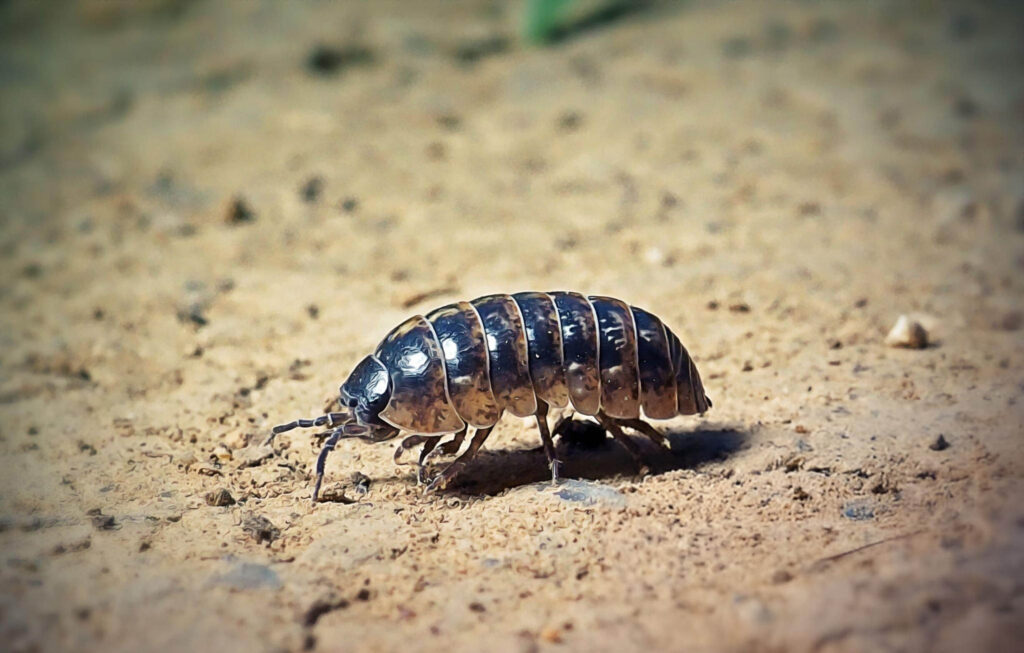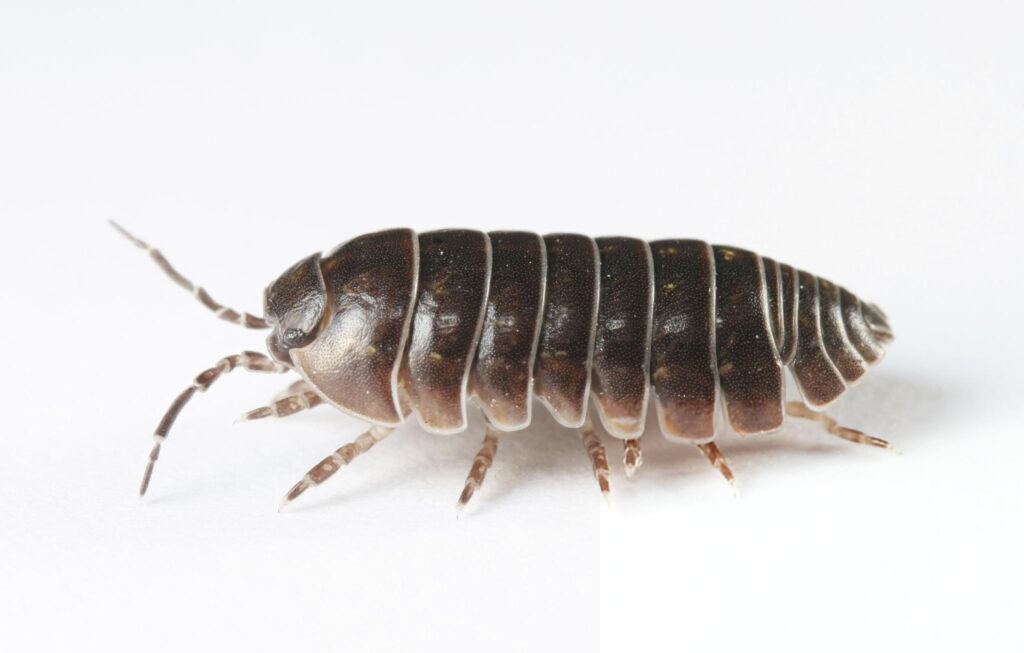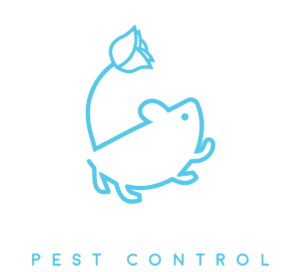Pill bugs and Sowbugs Control
Nature's Tiny Cleanup Crew
They’re small, armored, and love to roll in the dirt—meet the Pill bugs and Sowbugs, the backyard’s most underrated recyclers. These little creatures are often mistaken for insects, but they’re actually crustaceans, distant relatives of crabs and lobsters. They live their lives on land, quietly munching on decaying plants and dead matter, turning your garden into a cleaner, healthier ecosystem. But when these armored crawlers venture indoors, it’s a different story.
Pill bugs (also known as roly-polies) are famous for their ability to curl up into a perfect little ball when threatened, a defense mechanism that makes them adorable in the bug world. Sowbugs, on the other hand, look similar but can’t roll up—they’re the slightly less famous cousins who prefer to keep things flat. But despite their differences, they both share a taste for moist environments and a tendency to pop up in places you’d rather not see them, like your basement or bathroom.
Let’s take a closer look at these misunderstood critters and find out why they’re hanging around your home—and how to show them the exit!


Signs of a Pill bug or Sowbug Infestation
While these creatures aren’t dangerous, they can become an unsightly nuisance when they start appearing indoors. Here’s how to spot them:
- Crawling critters: If you see small, segmented creatures with hard, grayish shells moseying across the floor, especially in moist areas like basements or bathrooms, you’ve likely got Pill bugs or sowbugs.
- Clusters near moisture: Pill bugs and sowbugs are drawn to damp environments. You’ll often find them congregating near leaky pipes, in laundry rooms, or around potted plants.
- Dead bodies: Because they need moisture to survive, Pill bugs and sowbugs often dry out and die indoors. If you’re finding small, dried-out carcasses near doors or windows, it’s a sign that they’ve been trying to make your house their home.
The Difference Between Pill bugs and Sowbugs
Though they’re often grouped together, Pill bugs and sowbugs are two different species, each with their own unique traits:
- Pill bugs (Armadillidiidae): These are the ones you probably remember playing with as a kid. When threatened, Pill bugs curl into a tight, round ball, earning them the nickname “roly-polies.”
- Sowbugs (Oniscidae): Unlike Pill bugs, sowbugs can’t roll up. They have flatter bodies with two small tail-like appendages at the end. They’re less flexible but still very much at home in dark, damp places.
Both species are detritivores, meaning they feed on decaying organic matter, playing an important role in breaking down dead plants and other waste in your garden. Think of them as nature’s janitors—only a lot smaller and with more legs.
The Dangers (or Lack Thereof) of Pill bugs and Sowbugs
When it comes to your health, Pill bugs and sowbugs are completely harmless. They don’t bite, sting, or carry diseases. In fact, they’re more interested in your garden’s decaying plant material than anything inside your home. However, just because they’re not dangerous doesn’t mean you want them setting up camp indoors. Here’s why you might still want to give these tiny invaders the boot:
- Annoying invaders: While harmless, they can still be a nuisance if they show up in large numbers in basements, bathrooms, or around indoor plants.
- Damp environment indicators: The presence of Pill bugs and sowbugs inside your home could signal a moisture problem, like a leaky pipe or poor drainage. They thrive in wet conditions, so if you’ve got them indoors, it’s likely because something’s not right.
- Plants beware: While they mostly eat decaying plant matter, Pill bugs and sowbugs might start nibbling on the roots or stems of your potted plants if they run out of their usual diet.
How Are Pill bugs and Sowbugs Getting Into Your Home?
These moisture-loving creatures don’t sneak in with ill intent. In fact, they’re just following the damp, dark conditions they crave. But when they do cross the threshold into your home, it’s usually because of one of the following reasons:
- Cracks and gaps: Pill bugs and sowbugs are small enough to crawl through even the tiniest cracks in your foundation, gaps around windows, or spaces under doors.
- Excess moisture: Leaky pipes, wet basements, or even just poorly ventilated rooms provide the perfect habitat for them to thrive.
- Outdoor clutter: Piles of mulch, leaves, or firewood stacked too close to your house are prime hiding spots for Pill bugs and sowbugs. From there, it’s just a short trip inside.
What Conditions Attract Pill bugs and Sowbugs to Your Home?
Pill bugs and sowbugs thrive in environments that offer moisture and decaying organic matter. If your home provides these, you might just find yourself hosting a colony of them. Here’s what they love:
Moisture: Leaky faucets, wet basements, and areas with poor drainage are ideal spots for Pill bugs and sowbugs.
Decaying organic material: They feed on dead leaves, wood, and other organic debris, so a cluttered garden or compost pile near your home is like a buffet.
Damp crawl spaces or foundations: Any place that stays moist and dark, like under porches, in crawl spaces, or along foundations, is a Pill bug paradise.
10 Fascinating Facts About Pill bugs and Sowbugs
- Pill bugs can breathe through gills! Even though they live on land, they need moisture to survive because they have gills, just like their aquatic relatives.
- Pill bugs and sowbugs are ancient—they’ve been around for millions of years, evolving to become some of nature’s best recyclers.
- Pill bugs can detoxify heavy metals like copper and zinc, which means they help clean up toxic environments.
- They’re not pests—until they come inside. Outdoors, Pill bugs and sowbugs are actually beneficial to gardens, helping break down dead plant material and enrich the soil.
- Pill bugs have blue blood, thanks to the copper in their blood cells (much like some other crustaceans).
- A mother Pill bug carries her eggs in a pouch, similar to a kangaroo! The baby Pill bugs hatch and stay in the pouch until they’re ready to face the world.
- Sowbugs can’t roll up like Pill bugs, but they’re just as good at surviving in harsh, damp conditions.
- Pill bugs drink with their rear ends—yes, really! They can absorb water through their exoskeleton, which is handy when they’re in a hurry.
- Pill bugs aren’t insects; they’re actually crustaceans, related to crabs and lobsters.
- Sowbugs are one of the few land crustaceans that have fully adapted to life out of water but still need humid environments to breathe.
Tips for Controlling Pill bugs and Sowbugs
Ready to send these tiny recyclers back to the garden where they belong? Here’s how to keep them out of your home:
- Reduce moisture: Fix leaks, improve ventilation, and make sure there’s proper drainage around your home to discourage Pill bugs and sowbugs from moving in.
- Seal entry points: Close up cracks in your foundation, repair gaps around windows, and weatherproof doors to block their path indoors.
- Clear outdoor clutter: Remove piles of leaves, mulch, and wood from around your home’s foundation to eliminate outdoor breeding grounds.
- Improve ventilation: Use dehumidifiers in basements and bathrooms to keep these moisture-loving critters at bay.
- Raise plant pots: If you have indoor plants, consider raising the pots off the ground to prevent Pill bugs and sowbugs from feeding on their roots.
Why Professional Help May be the Best Way to Evict Pill bugs and Sowbugs
Pill bugs and sowbugs might not be the worst pests in the world, but they can be a sign of deeper issues—like excess moisture or cracks in your home’s foundation. If they’re getting inside, there’s a good chance something else is, too. That’s why it’s best to call Pasadena Pest Control. Our experts will not only remove these critters but also identify the conditions that are letting them in.
We offer targeted, long-term solutions that get rid of your Pill bug or sowbug problem for good, while also preventing future infestations. If DIY methods are failing it might be time to get a professional assessment?
Ready to Roll These Pests Out of Your Home?
Pill bugs and sowbugs belong outside, not in your basement or bathroom. Call Pasadena Pest Control today, and we’ll take care of your unwanted visitors quickly and efficiently.
Safety First
“Is it Safe?”
At Pasadena Pest Control, we keep the safety of your family and pets at the forefront of our minds as we plan and work, doing so with minimal disruption to your daily life. We apply chemicals according to the label, which in California is among the strictest and safest in the nation. We take into account your pets and plants, your family and the features specific to your property. At Pasadena Pest Control, we are well-trained on safety procedures, eco-consciousness and educating our customers. And yes, we are licensed, bonded and insured.
When you work with us, you will always know what to expect, how to be prepared, when we are coming, when we’ve started and when we’re done. In short, we provide The Service We’d Want in Your Shoes.
Pasadena Pest Control: Your home should be a no-roll zone for Pill bugs—leave that to the roly-polies!
Home Protection Plan
This pest is considered a “General Pest” and is covered under our General Pest Home Protection Plan. For more information on our Home Protection Plan, see here.
Call Pasadena Pest Control—Because Chasing Roaches at 2 A.M. is So Last Season
Let’s face it, chasing down oriental roaches in your basement at midnight is not how you want to spend your time. Call Pasadena Pest Control, and we’ll handle these pests faster than you can say, “Why does my house smell like old gym socks?” Time to get serious about your roach problem—give us a shout today!
Questions Others are asking
We ❤️ love helping new customers! Don’t see your question answered below? Call us and we’ll
be happy to provide more information.
be happy to provide more information.
They are crustaceans commonly found in moist environments, feeding on decaying organic matter.
They are generally harmless and do not damage structures or carry diseases.
Reduce moisture levels, remove decaying plant material, and seal entry points to prevent them from entering homes.
